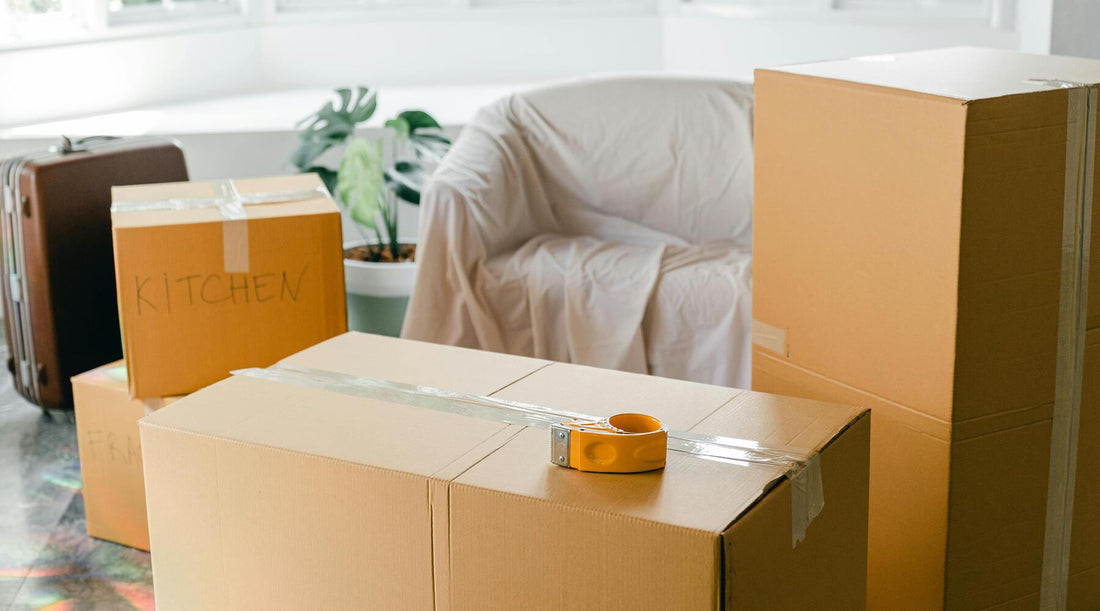How to Pack for a Move: Supplies, Packing List, and Tips

Moving can be really stressful, but with a good plan, you can make it much easier. Whether you're moving nearby or far away, learning how to move well will save you a lot of hassle. The key to a successful move is being organized and prepared. One important step is creating a reliable moving packing list, which will keep you on track. Plus, using some smart packing tips can help a lot.
Must-Have Supplies for a Safe and Smooth Move
When it comes to moving, having the right supplies can make all the difference. Here are the must-have items you'll need for a safe and smooth transition:
1. Sturdy Moving Boxes
Sturdy moving boxes are the backbone of any successful move. These aren't just any cardboard boxes; they are specifically designed to handle the weight and ensure that your belongings stay intact. Invest in various sizes—small, medium, and large—to accommodate different items. Smaller boxes are perfect for heavier objects like books, while larger ones are better for lighter but bulkier items like bedding.
2. Bags
Bags serve as versatile packing solutions. You can use duffel bags, garbage bags, and even reusable shopping bags for various purposes. Duffel bags are excellent for clothes and linens, while garbage bags can come in handy for soft, non-breakable items. Reusable shopping bags are perfect for miscellaneous items and last-minute grabs.
3. Packing Tape
Good-quality packing tape is essential to keep your boxes sealed and secure. Opt for heavy-duty tape that won't easily rip or come undone during transit. Having a tape dispenser can also speed up the process and make it easier to seal your boxes tightly.
For reliable packing tape, consider using Munbyn's packing tape. Known for its durability and strong adhesive, its tape ensures your boxes stay securely closed throughout your move. Plus, it comes with an easy-to-use dispenser that makes sealing boxes a breeze.
4. Padding
Padding materials such as bubble wrap, foam peanuts, or paper can protect your fragile items. Use these materials to fill empty spaces in your boxes and wrap delicate items like glassware and electronics. This helps prevent movement and reduces the risk of damage.

5. Wrapping Paper
Wrappings like bubble paper, honeycomb wrapping paper, or even newspaper are fantastic for cushioning your belongings. Wrap each item individually to provide extra protection. Bubble wrap is ideal for breakables, honeycomb wrapping paper offers an eco-friendly option, and newspaper can be used for less delicate items.
6. Scissors and Utility Knife
A pair of scissors and a utility knife are indispensable tools for quickly cutting through tape and breaking down boxes. Keep them handy throughout your packing process. A utility knife can also be useful for trimming padding materials.
7. Moving Blankets
Moving blankets are thick, durable covers that protect furniture and large items from scratches and dings. They are especially useful for safeguarding wooden furniture, appliances, and other bulky items during transport. Secure them with tape or elastic bands to keep them in place.
8. Labels and Markers
Clearly marking your boxes with labels and markers helps you and your movers know what's inside and where each box should go in your new home. Color-coded labels can further streamline the process, making it easier to identify which boxes belong in which rooms.
For professional-grade labeling solutions, consider purchasing labels from Munbyn. They specialize in high-quality shipping labels that are perfectly sized for moving boxes, typically measuring 4x6 inches. These labels are ideal for ensuring your boxes are clearly marked and organized during your move.
Besides shipping labels, Munbyn offers a variety of other labels, such as rectangle labels, which can help you organize and categorize your belongings during the move. These labels are not only useful for moving but also provide everyday organizational benefits. Additionally, Munbyn's creative labels add a touch of fun and versatility to your daily life, making routine tasks more enjoyable and adding a splash of creativity to your surroundings.
Having these supplies on hand ensures that your packing process goes smoothly and that your belongings arrive safely at your destination. Investing time and resources into gathering quality materials will pay off in the long run.
How to Make a Full Moving Packing List
Creating a comprehensive moving packing list is your first step towards an organized move. Begin by listing every room in your current home. Under each room, write down all the items you need to pack. This will give you a clear overview of what needs to be done and help you track your progress.

Your packing list should include categories like kitchenware, clothing, electronics, and decor. Don't forget to add a section for essential documents and valuables. As you pack, check off each item from the list. This systematic approach ensures nothing gets left behind and makes unpacking much easier.
Stress-free Packing Tips for Moving
Packing doesn't have to be stressful if you follow some tried-and-true strategies. Here are some detailed suggestions to help you pack efficiently and with minimal stress:
Write a detailed suggestion for the following tips, introduce them one by one with full descriptions.
1. Label each pack and box clearly
Clearly labeling each pack and box is crucial. Include details about the contents and the room where the box belongs. For instance, instead of just writing "Kitchen," write "Kitchen - Pots and Pans." This level of detail will make unpacking far more straightforward and efficient.
2. Focus on one area at a time
Concentrate on one area or room at a time to stay organized. Avoid mixing items from different rooms in the same box, as this can create confusion and make unpacking a chaotic experience. Stick to a systematic approach by completing one room before moving on to the next.

3. Discard unused items
Take this opportunity to declutter. Donate, sell, or dispose of items you no longer use or need. This not only reduces the number of things you have to pack but also gives you a fresh start in your new home. Less clutter translates to fewer boxes and a more manageable move.
4. Book services early
Don't wait until the last minute to book essential services such as moving trucks, professional movers, or storage units. Early booking ensures availability and may even save you money. Plus, it gives you peace of mind knowing that logistical details are taken care of.
5. Pack in advance
Start packing in advance of your move date. Begin with items you don't use frequently, such as seasonal decorations, books, and out-of-season clothes. Gradually work your way to everyday items. This staggered approach prevents last-minute panic and helps you stay organized.
6. Handle fragile items with care
When packing delicate items, take extra precautions to protect them. Use ample padding and wrapping materials, and clearly mark these boxes as "Fragile." Place breakable items in smaller boxes to reduce the risk of damage, and avoid stacking them under heavier boxes during transit.
7. Don't leave too much empty in the box
Avoid leaving too much empty space in your boxes, as this can cause items to shift around and potentially get damaged. Fill any gaps with padding materials like bubble wrap, crumpled paper, or towels. This not only provides extra protection but also keeps your boxes stable and easy to stack.
8. Tape your moving boxes tightly
Ensure that your boxes are well-sealed with strong packing tape. Reinforce the bottom seam and all edges of the box. Over-taping might seem excessive, but it's better to be safe than sorry. Properly sealed boxes are less likely to burst open during the move.
Summing Up
By following these tips and being well-prepared, you can make your moving experience significantly smoother and less stressful. Remember to gather all necessary supplies, create a detailed moving packing list, and employ effective packing strategies. With a bit of planning and organization, your move can be a seamless transition to your new home.






